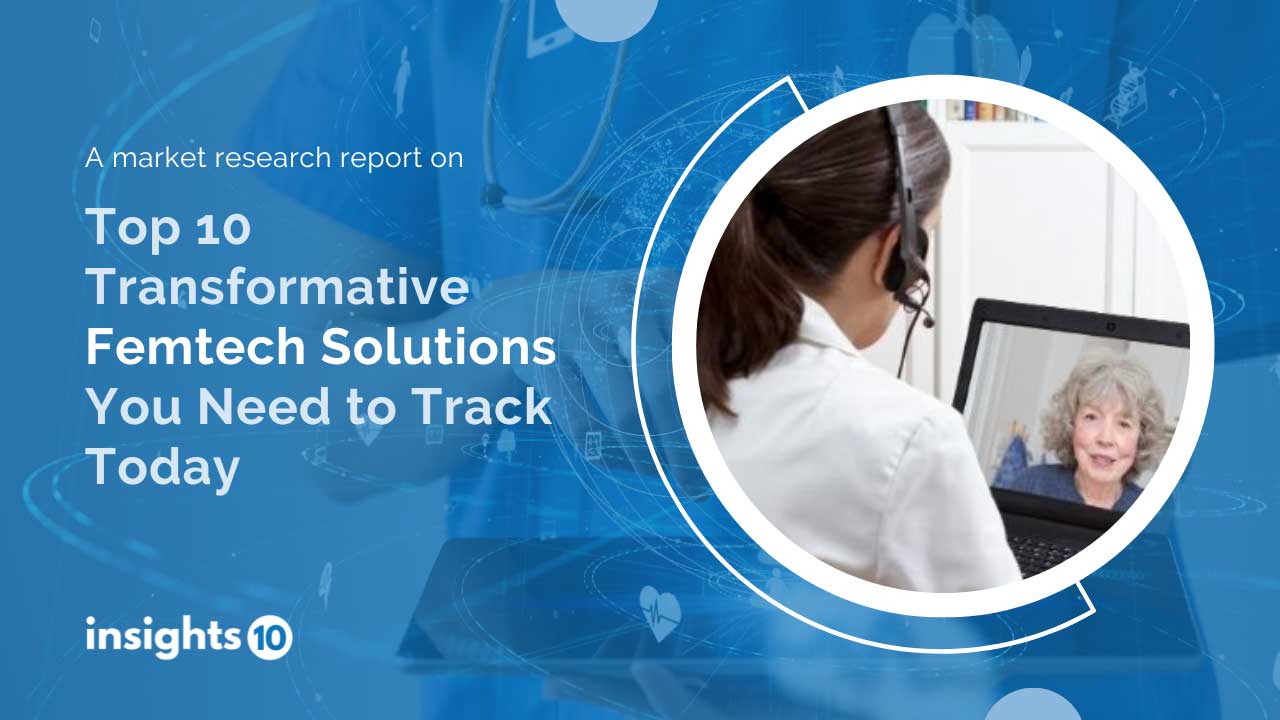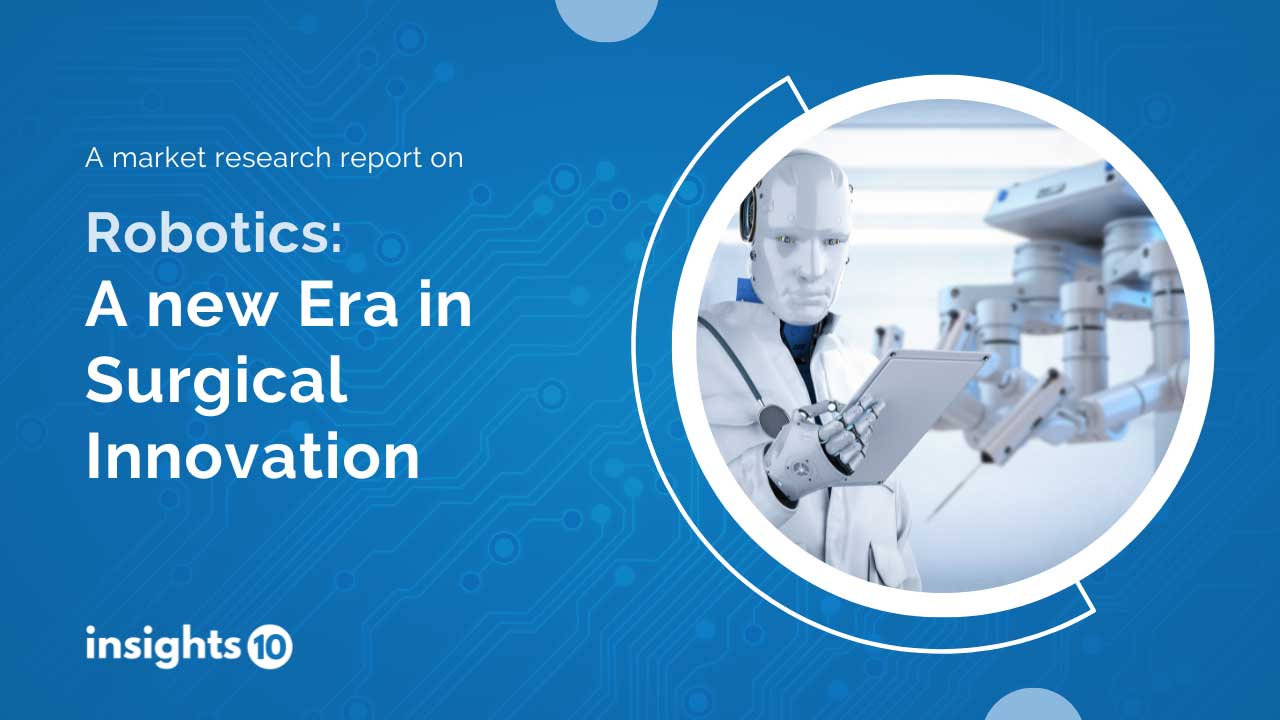Top 10 Transformative Femtech Solutions You Need to Track Today
Entrepreneur Ida Tin originally used the term "Femtech" in 2016. It has expanded over the course of just a few years to include a variety of technologically enabled consumer-focused products and solutions.
Buy Now Download Sample Report

Rise of Femtech: Key Market Trends

Femtech Market Growth
- Growing health awareness and the number of women experiencing health concerns both point to the market's potential for expansion
- The sector expands beyond reproductive health to address other healthcare issues such as breast cancer, cervical cancer, mental health, general health & wellness, and pregnancy monitoring
- Healthcare applications are integrating cutting-edge technologies, like AI and data science, to deliver actionable insights based on the data entered, empowering women to make decisions about their health and wellness
- Data-driven femtech solutions provide tailored assistance that coincides with a woman's menstrual cycle and even offer advice and recommendations that are culturally appropriate for their community
- Because of the rising prevalence of women's health problems, rising use of value-based care services, and integration of cutting-edge technologies like predictive analytics, gamification, and cloud synchronization, the wearables market can expand quickly
Top 10 Femtech Solutions Shaping Healthcare Systems
Technological advancements in the healthcare sector are changing the landscape of treating women on a large scale, apps built by femtech companies feature healthcare for reproductive systems, fertility tracking, pregnancy, and nursing care, and general and fertility monitoring devices
Helping Women Track Menstruation
- Clue, a period-tracking app combines the user’s menstrual cycle data with a mathematical model sourced from clinical research data that predicts which days are high or low risk for pregnancy
- Clue’s birth control algorithm is 97% effective if it is exactly used as the instructions given on the app
Making IVF Treatment Virtual
- Apricity a virtual fertility clinic, uses artificial intelligence to help women facing problems with conceiving
- The virtual clinic offers a fertility care app that helps women in understanding the treatment along with posting reminders and guiding them consistently throughout their conceiving journey
Accessible Digital Healthcare Clinic
- Grace Health, a health tech company focused on developing health services to women online provides a digital assistant enabling women to track and understand their reproductive health
- Women can also chat with medical experts or fertility coaches about their specific health needs
Focus on Breastfeeding Consulting
- LactApp, provides AI in novel use cases such as breastfeeding and maternity
- It serves as a virtual breastfeeding consultant that mothers can use to answer their questions as they begin breastfeeding and develops an innovative approach to lower health care costs and improve women’s satisfaction
Solving Menopause Related Issues
- Joylux, using technology-driven solutions solves menopause issues women face as they age
- The company offers smart wellness devices that use red light to improve bladder function, sexual function, and vaginal dryness
Treating PCOS Virtually
- Allara, a virtual care platform designed for women struggling with complex polycystic ovary syndrome is allowing women to connect with physicians and registered dietitians who can diagnose, treat, and manage these conditions, enabling women to improve and track their medical health in an efficient manner
Simplified Birth Control
- Simple Health is offering birth control and women’s health products to the 19 million women who lack reasonable access to birth control
- After a virtual consultation with a physician, patients have prescribed the birth control option that fits best with their lifestyle
Remote Gynaecological Imaging
- Illumigyn’s gynecological imaging system- Gynescope uses more accurate pap smears and digitally stores information about the vagina, cervix, and external genitalia
- The images are uploaded to the cloud for viewing and analysis by any doctor across the globe
Assistance Through on-demand Digital Health Clinic
- Maven Clinic, a B2B digital healthcare clinic that specializes in conception, pregnancy, and postpartum care is offering many services, from on-demand video appointments with physicians to support for IVF, egg freezing, pregnancy, postpartum, partner, adoption, surrogacy etc
Educating Mothers about Pelvic Exercises
- Every Mother is offering evidence-based exercise therapy for mothers
- Focusing on core and pelvic floor exercises, the program repair diastasis recti and improve core strength which is designed for mothers at any stage of motherhood
1. Executive Summary
1.1 Digital Health Overview
1.2 Global Scenario
1.3 Country Overview
1.4 Healthcare Scenario in Country
1.5 Digital Health Policy in Country
1.6 Recent Developments in the Country
2. Market Size and Forecasting
2.1 Market Size (With Excel and Methodology)
2.2 Market Segmentation (Check all Segments in Segmentation Section)
3. Market Dynamics
3.1 Market Drivers
3.2 Market Restraints
4. Competitive Landscape
4.1 Major Market Share
4.2 Key Company Profile (Check all Companies in the Summary Section)
4.2.1 Company
4.2.1.1 Overview
4.2.1.2 Product Applications and Services
4.2.1.3 Recent Developments
4.2.1.4 Partnerships Ecosystem
4.2.1.5 Financials (Based on Availability)
5. Reimbursement Scenario
5.1 Reimbursement Regulation
5.2 Reimbursement Process for Diagnosis
5.3 Reimbursement Process for Treatment
6. Methodology and Scope
Methodology for Database Creation
Our database offers a comprehensive list of healthcare centers, meticulously curated to provide detailed information on a wide range of specialties and services. It includes top-tier hospitals, clinics, and diagnostic facilities across 30 countries and 24 specialties, ensuring users can find the healthcare services they need.
Additionally, we provide a comprehensive list of Key Opinion Leaders (KOLs) based on your requirements. Our curated list captures various crucial aspects of the KOLs, offering more than just general information. Whether you're looking to boost brand awareness, drive engagement, or launch a new product, our extensive list of KOLs ensures you have the right experts by your side. Covering 30 countries and 36 specialties, our database guarantees access to the best KOLs in the healthcare industry, supporting strategic decisions and enhancing your initiatives.
How Do We Get It?
Our database is created and maintained through a combination of secondary and primary research methodologies.
1. Secondary Research
With many years of experience in the healthcare field, we have our own rich proprietary data from various past projects. This historical data serves as the foundation for our database. Our continuous process of gathering data involves:
- Analyzing historical proprietary data collected from multiple projects.
- Regularly updating our existing data sets with new findings and trends.
- Ensuring data consistency and accuracy through rigorous validation processes.
With extensive experience in the field, we have developed a proprietary GenAI-based technology that is uniquely tailored to our organization. This advanced technology enables us to scan a wide array of relevant information sources across the internet. Our data-gathering process includes:
- Searching through academic conferences, published research, citations, and social media platforms
- Collecting and compiling diverse data to build a comprehensive and detailed database
- Continuously updating our database with new information to ensure its relevance and accuracy
2. Primary Research
To complement and validate our secondary data, we engage in primary research through local tie-ups and partnerships. This process involves:
- Collaborating with local healthcare providers, hospitals, and clinics to gather real-time data.
- Conducting surveys, interviews, and field studies to collect fresh data directly from the source.
- Continuously refreshing our database to ensure that the information remains current and reliable.
- Validating secondary data through cross-referencing with primary data to ensure accuracy and relevance.
Combining Secondary and Primary Research
By integrating both secondary and primary research methodologies, we ensure that our database is comprehensive, accurate, and up-to-date. The combined process involves:
- Merging historical data from secondary research with real-time data from primary research.
- Conducting thorough data validation and cleansing to remove inconsistencies and errors.
- Organizing data into a structured format that is easily accessible and usable for various applications.
- Continuously monitoring and updating the database to reflect the latest developments and trends in the healthcare field.
Through this meticulous process, we create a final database tailored to each region and domain within the healthcare industry. This approach ensures that our clients receive reliable and relevant data, empowering them to make informed decisions and drive innovation in their respective fields.
To request a free sample copy of this report, please complete the form below.
We value your inquiry and offer free customization with every report to fulfil your exact research needs.













































